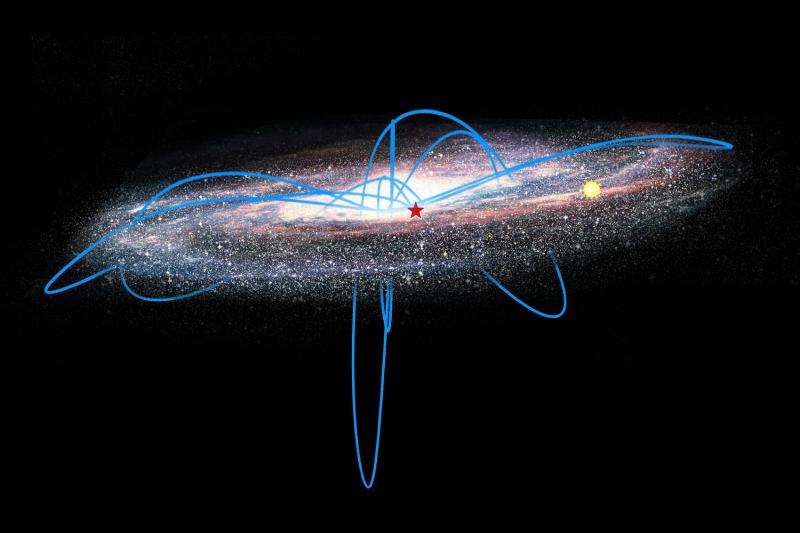Starry surprise in the bulge: encounter of a halo passerby

A team led by Andrea Kunder from the Leibniz Institute for Astrophysics Potsdam (AIP) measured the velocity of a sample of 100 old RR Lyrae stars thought to reside in the Galactic bulge, the central group of stars found in most Galaxies.
It took them by surprise, when they found that one of these stars has a space velocity of almost 500 km/s - more than five times the speed expected for normal bulge stars. Since RR Lyrae stars pulsate and all produce roughly the same luminosity, the scientists could use basic physics to measure its exact distance to us and reconstruct the orbit of the star over the last one billion years. They could then get a handle of where the star came from. The results are striking: the star is not a bulge star but an interloper from the halo - as the galactic outskirts are referred to - of the Galaxy and is now moving through the bulge.
"This star with the catalogue name MACHO 176.18833.411 has the largest velocity of any RR Lyrae star in the Galactic bulge known so far, and is travelling at 482 km/s relative to the Galactic rest frame, just below the escape speed of the Galaxy," says Andrea Kunder. Stars of such high velocity are rare among bulge stars, and the more precise distance of the RR Lyrae star makes it possible to explore its origin in greater detail. They found that this star, although located now within the bulge and less than 1 kpc from the Galactic center, is actually not confined to the bulge but moves on an elliptical orbit as do stars in the Milky Way halo.
The Milky Ways central region called the bulge is known to roughly resemble a peanut but with a length of 10,000 light years, and is made of old stars, gas and dust. In recent years, astronomers have suspected that the bulge harbours the oldest stars in the Galaxy, and a search to uncover the first stars made in the Milky Way, by probing stars in the bulge, is in full swing. Andrea Kunder and her team now demonstrate that some old stars in the Milky Way Galaxy's bulge may not actually be true bulge members, complicating the search for old, bulge stars.
This result is part of a larger study entitled BRAVA-RR, for Bulge RR Lyrae Radial Velocity Assay and a step forward in attempting to disentangle the oldest stars from the bulge with those from other regions of the Milky Way. It shows that contamination from halo stars is very real when looking at stars in the Milky Way bulge. Interlopers from the Galactic halo pass through the bulge and can be mistaken for bulge stars. The one now found is almost certainly not the only one.
RR Lyrae stars are variable stars that can be used as standard candles to measure galactic distances. The first star that showed the characteristic periodic pattern was found in the constellation Lyra and gave the population its name. Until now about 38,000 RRLs toward the bulge have been identified from photometric surveys and trace an ancient stellar population.
More information: Andrea Kunder et al. 2015 ApJ 808 L12. DOI: 10.1088/2041-8205/808/1/L12



















